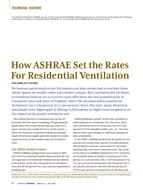A technology company and its partners in the fabric industry have developed methods for integrating microencapsulated phase-change material into the production of fabrics, fibers, and foams for use in outdoor wear, work wear, and home textiles. The products containing the phase-change technology show branding, emphasizing that the products with this technology will reduce body temperature fluctuations and, thus, increase comfort. The thermal resistance of traditional fabrics is tested using a steady-state procedure, whereby a temperature difference is maintained between a simulated skin and a simulated outdoor environment. These procedures are adequate for traditional fabrics. Little or no energy is stored in the fabric. In the case of phase-change products, these tests ignore the fact that during a transient, energy is stored or released in the phase-change material, depending on the activity level of the wearer. A new test instrument and test protocol has been developed for testing the dynamic performance of fabrics containing phase-change material. The instrument uses a sinusoidally varying heat input to a hot plate to simulate human activity. Cold plates at constant temperature simulate the environment outside the garment. A new metric, the temperature regulating factor (TRF), has been developed to characterize how well a phase-change fabric moderates skin temperature. This metric also allows fabrics to be compared. As expected, test results show that phase-change fabrics can significantly reduce hot plate temperature fluctuations when compared to similar fabrics without phase-change material.
Units: Dual
Citation: ASHRAE Transactions, vol. 108, pt. 1, Atlantic City, 2002
Product Details
- Published:
- 2002
- Number of Pages:
- 8
- File Size:
- 1 file , 1.3 MB
- Product Code(s):
- D-6955

